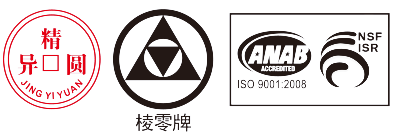Pins of Standard Fasteners: Definition, Classification and Application Scenarios
Release time:
2024-07-12
As a kind of fastener, pin is mainly used for positioning, connecting, fixing and transmitting power or locking other fasteners. According to different functions and uses, pins can be divided into many types, and each type has its specific application scenarios.
The pin is mainly composed of two parts, the head and the nail rod, and its structure is simple but powerful. Common pins include cylindrical pins, tapered pins, slotted pins, elastic pins, etc. Cylindrical pin is mainly used for positioning, to ensure that the relative position between parts is accurate; taper pin through its tapered structure to provide additional locking force, suitable for the need for higher fastening requirements of the occasion. The slot pin is mostly used for occasions that require frequent disassembly. Through its unique slot design, it is easy to install and disassemble.
In industrial production, the application scenarios of pins are very extensive. From automobile manufacturing to aerospace, from mechanical manufacturing to electronic equipment, almost all fields involving precision assembly are inseparable from the participation of pins. For example, in automobile engines, pins are used to connect crankshafts and connecting rods to ensure the normal operation of the engine; in the aerospace field, pins are used to connect aircraft parts to ensure flight safety.
With the progress of science and technology and the development of industry, the design and manufacture of sales are also constantly upgrading. Modern pin products not only require high strength and high wear resistance, but also need to meet the requirements of lightweight and environmental protection. Therefore, many companies are actively developing new materials and new processes to promote the innovative development of their products.


